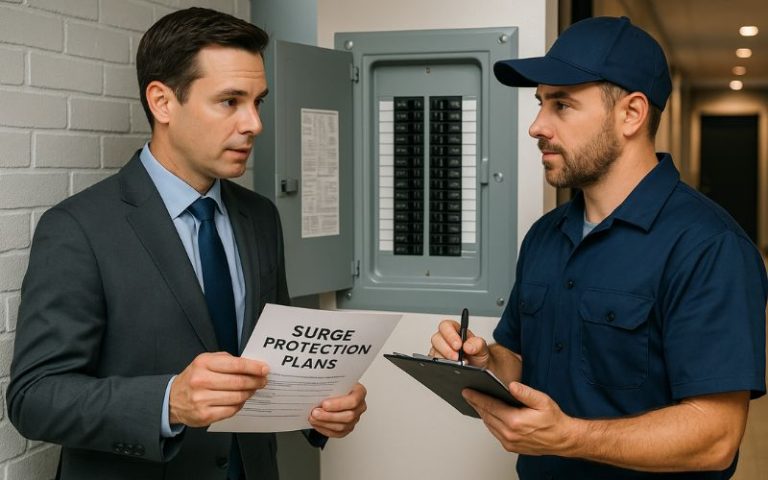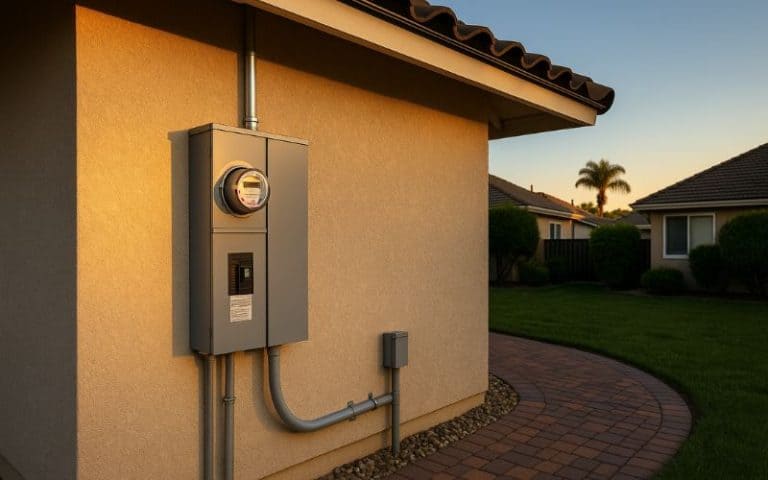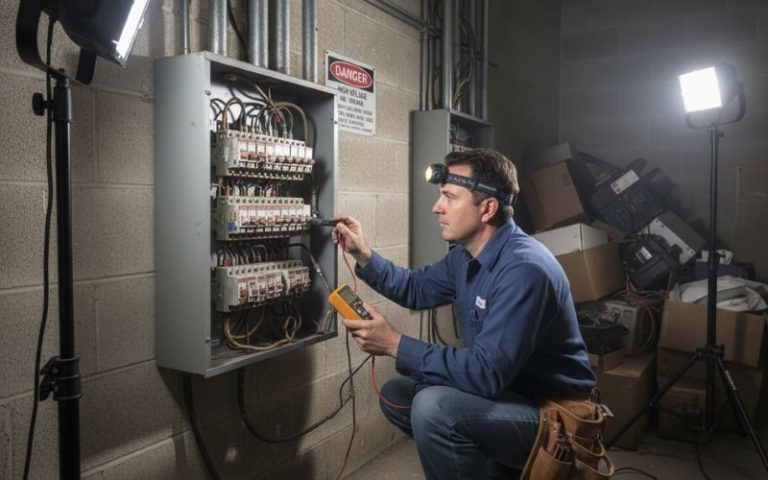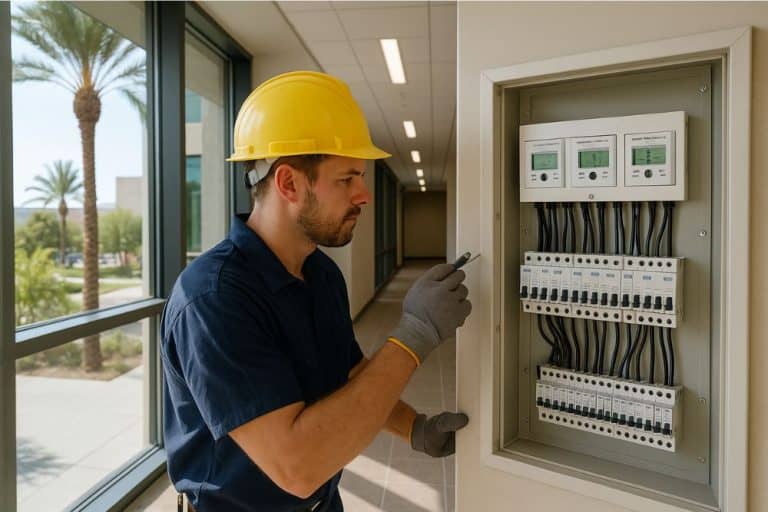Electrical Outlets & Switches Repair in Los Angeles
Updated November 2025
Loose outlets, warm faceplates, crackling switches, or plugs that fall out are more than annoyances, they are safety warnings. RG Electric provides code-compliant repair and replacement of outlets and switches across Los Angeles for homes, apartments, and small commercial spaces. Our licensed C-10 electricians diagnose the root cause, correct unsafe wiring, and install modern, listed devices that feel solid and work reliably.
Every property relies on hundreds of terminations behind devices you touch daily. When those terminations loosen or overheat, you may see scorch marks, smell a faint burning odor, or notice intermittent power. Our team repairs the device, restores proper terminations, and (if needed) upgrades the circuit or panel so problems do not return. We label work clearly and provide photos for your records and insurance.
Why outlets and switches matter for safety
Devices are the point where people meet the electrical system. Correctly installed outlets and switches keep live parts contained, provide secure contact for plugs, and help breakers sense faults quickly. Worn contacts create heat and arcing. Loose back-stab connections can intermittently open a circuit. Overfilled boxes can exceed conductor fill limits and pinch insulation. We correct these conditions and, where required, add GFCI or AFCI protection so devices operate as intended under today’s codes.
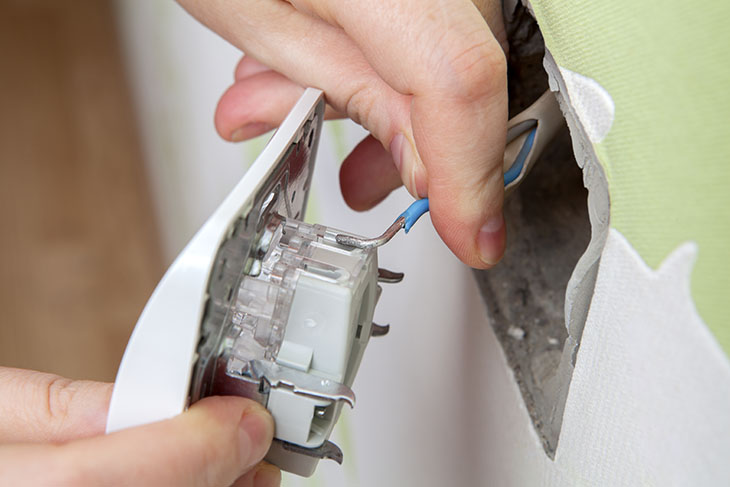
Repairs and upgrades we handle
Standard receptacles to tamper-resistant (TR): We replace worn or unsafe receptacles with modern TR devices that resist foreign objects, a simple upgrade for homes with kids or rentals. We secure boxes, set devices flush, and ensure solid screw-terminal connections rather than weak back-stabs.
GFCI protection where it’s required: Kitchens, bathrooms, garages, outdoors, laundry areas, and other “wet” or utility spaces typically require ground-fault circuit interrupter (GFCI) protection. We install GFCI receptacles or GFCI breakers, test the circuit end-to-end, and label downstream protection so future work is clear.
AFCI protection and nuisance trip fixes: Arc-fault protection helps detect dangerous arcing. If your home has persistent AFCI trips, we test devices, look for shared neutrals or mixed grounds, and correct wiring so protection works without nuisance trips.
Switches, dimmers, and 3-way/4-way controls: From quiet, high-quality toggles to smart dimmers and multi-location controls, we match devices to fixture load and ensure compatibility with LEDs. We replace noisy or hot dimmers, correct travelers on 3-ways, and eliminate ghosting and flicker by pairing the right dimmer with the right driver.
Special-purpose and dedicated circuits: Microwaves, refrigerators, disposals, washers, dryers, and space heaters often need dedicated circuits and proper receptacle types. We add the circuit, upsize conductors when necessary, and update the panel directory so future service is straightforward.
Box and mounting corrections: Wobbly devices are usually a sign of a loose box or improper spacers. We re-support boxes to studs or masonry with listed hardware, correct box fill, add extenders for tile or paneling, and set devices level with the wall finish.
Common symptoms that mean it’s time to call
Look for plugs that won’t stay in, outlets that feel warm, faceplates that discolor or crack, frequent breaker trips when using a specific receptacle, buzzing or sizzling at a switch, or a faint burning smell near a device. Tripped GFCIs that won’t reset or a dark string of outlets can indicate an upstream loose neutral. We diagnose quickly and repair the underlying cause, not just the visible device.
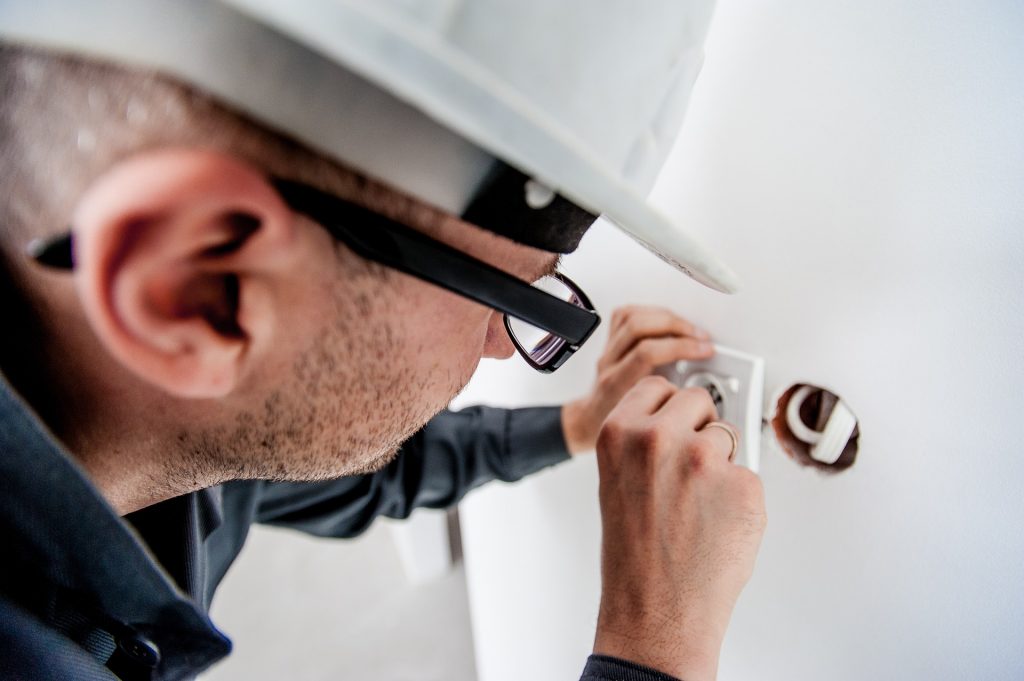
Our repair process
We begin with a short interview about symptoms and recent changes, then test the affected circuit. At the panel we verify breaker size and torque, check for heat at the bus, and confirm proper grounding and bonding. At the device we inspect terminations, evaluate box fill, and test for shared neutrals or reversed polarity. We replace failed devices with listed parts, make screw-terminal connections to manufacturer torque, and neatly pigtail where required. If the issue ties back to a larger problem, deteriorated wiring, moisture intrusion, or an obsolete panel, we document with photos and propose options such as a new home run, a dedicated circuit, or a panel upgrade.
Code, permits, and inspection
Device swaps can be simple, but safety and compliance still matter. Like-for-like outlet or switch replacements in the same location typically do not require a permit. However, once the scope goes beyond a straight swap — adding a new receptacle or switch location, extending a circuit, converting a 15A circuit to 20A, adding a GFCI or AFCI breaker, relocating boxes, or running new cable/conduit — a permit and inspection may be required. We review your scope case by case and handle the permit paperwork and scheduling when needed.
What usually triggers a permit: new outlets or switches, moving a box, adding a dedicated appliance circuit, installing a new GFCI/AFCI breaker in the panel, work in bathrooms, kitchens, laundry areas, garages, or outdoors, and any wiring in walls or ceilings (as opposed to a simple device swap). For apartments and common areas, management or HOA rules may also require documentation even for small jobs — we provide it.
Correct device type and rating: We match the device to the circuit and the load. 15A receptacles on 15A circuits; 20A (T-slot) receptacles where a true 20A branch circuit serves dedicated equipment. Motor loads, dimmers, and smart controls get devices listed for the exact load type and wattage. For aluminum branch circuits, we use listed CO/ALR devices or copper pigtails with approved connectors to prevent overheating.
Box fill and support: Overfilled or loose boxes create heat and damaged insulation. We calculate conductor/strap volume against the cubic-inch rating, add box extenders where finish thickness increased (tile, shiplap), and secure boxes to framing or masonry with listed supports. Devices sit flush and level with the finished surface; no gaps that expose live parts.
GFCI/AFCI protection where required: Kitchens, bathrooms, garages, outdoors, laundry areas, basements, and similar locations require GFCI protection. Most habitable rooms require AFCI; many modern panels use combination (dual-function) breakers that provide both arc-fault and ground-fault protection. We test the entire downstream run and clearly label the first GFCI device or breaker so future work is straightforward.
Tamper- and weather-resistance: In dwelling units, receptacles typically must be tamper-resistant (TR) for child safety. Outdoors and in damp/wet locations we use weather-resistant (WR) devices with in-use (bubble) covers and listed, weather-rated boxes and gaskets. Garage, patio, and porch outlets follow the same rules, and we verify that any exterior boxes are sealed to the surface to keep water out.
Grounding, bonding, and polarity: We verify equipment grounding continuity, correct polarity (hot/neutral orientation), and tight terminations at the device and panel. Shared-neutral (multi-wire) branch circuits get properly tied handle breakers or a 2-pole common-trip breaker so faults or maintenance do not leave a live shared neutral.
Panel labeling and documentation: After work is complete, we update the panel directory with clear, room-by-room descriptions, note any GFCI/AFCI coverage, and provide labeled photos for your records and insurance. If we discover capacity or condition issues (e.g., heat discoloration on the bus, obsolete breakers, or a crowded panel), we document them and offer options such as a new panel upgrade or a small sub-panel.
What to expect at inspection (when required): We meet the inspector, have devices accessible (furniture pulled forward if needed), and demonstrate GFCI/AFCI operation, correct box fill, proper support, and labeling. If a correction is requested, we handle it promptly and provide updated photos so you have a clean paper trail for resale or insurance.
Apartments, HOAs, and small commercial spaces
For multi-unit properties, we standardize device types and colors to simplify maintenance, label house circuits, and document repairs for smooth inspections and insurance. We work off-hours when needed and coordinate access to meter rooms and common areas. Explore our commercial electrical services for larger scopes or common-area upgrades.
Costs and scheduling
Pricing depends on quantity of devices, box condition, access, and whether circuits or panel capacity need upgrades. Share clear photos of the panel (door open), the affected devices, and any visible damage when you request service. We provide transparent pricing before work begins and can bundle related items, for example, replacing worn receptacles throughout a room while we are on site, to reduce repeat visits.
Related electrical services
Outlet and switch issues often connect to broader system needs. See our panel services, circuit breaker repair, wiring services, and indoor lighting upgrades for a complete solution.
Frequently asked questions
Electrical work is hazardous. Consult a licensed electrician like RG Electric for inspections, permits, and code-compliant installations.

